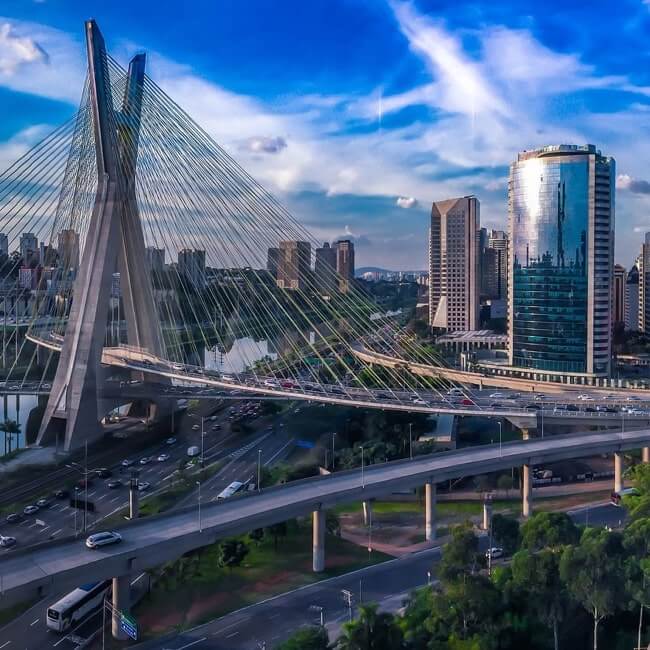How geopolitics shaped Chile's trans-Pacific cable route

Chilean authorities said on July 27 that the country has chosen Auckland-Sydney as the route for its transoceanic cable project to connect with the Asia-Pacific region, in what appears to be a snub of China.
In 2017, telecoms regulator Subtel carried out a pre-feasibility study with China's Huawei that yielded three possible routes from Chile, all with Shanghai as the terminus: Auckland-Sydney-Shanghai; Tahiti-Shanghai, and Auckland-Shanghai.
The initial influence of China – Chile's main trading partner – also seemed to bend the project in favor of Huawei, which in recent years had expanded to building undersea cables connecting Latin America and Africa.
But last year Chile started to receive pressure from the United States, including a visit from US Secretary of State Mike Pompeo, to refrain from contracting Huawei for 5G technology, as part of a Washington campaign against the Chinese company and the risk of Beijing collecting sensitive data.
Subtel said on July 27 that the 13,180km route passing through Auckland and ending at Sydney was the most cost-efficient option, requiring fewer kilometers of fiber optics and landing in the digital hub of Australia, which has 12 interconnection cables with the rest of the world, including a submarine link to Japan.
Australia has banned Huawei from participating in its planned 5G network.
While Subtel did not explicitly mention Japan in its statement, the Nikkei Asian Review reported that Japan proposed the winning route, which would give Japanese companies an edge in winning equipment contracts that will be put out to bids starting next year.
Futhermore, Japan would be willing to invest and extend financing for the project through the Japan Bank for International Cooperation and the Japan ICT Fund if a Japanese company is selected, the outlet added.
Japan’s IT and network technology solutions provider NEC is one of the world's top undersea cable suppliers.
THE PROJECT
The US$3mn feasibility study was awarded in 2019 to Latin American development bank CAF.
In 2017, however, telecoms regulator Subtel carried out a pre-feasibility study of the cable with Chinese telecoms equipment supplier Huawei.
The Huawei study had come up with three potential routes: Valparaíso-Juan Fernández Island-Easter Island-Auckland-Sydney-Shanghai; Valparaíso-Juan Fernández Island-Easter Island-Tahiti-Shanghai; and Punta Arenas-Auckland-Shanghai.
Opting for the Australia and New Zealand route, MTT said it also considered aspects such as customer segments, product mix, price curve, value proposition, relationship with customers, costs and financial resources, “finally concluding that said route is the most recommended to deploy.”
Transport minister Gloria Hutt said in the Subtel release that “this is the first initiative that will connect the region with Oceania and finally with Asia, opening enormous opportunities for Chile to become the digital hub of South America on the Pacific side, making it an attraction for various investments in datacenters and those related to digital commerce.”
Remi Galasso, founder of Auckland firm Hawaiki cable, told New Zealand outlet Stuff he had been in discussions with Subtel about laying the cable south of New Zealand.
In addition to the Pacific project, Chile’s international submarine systems include the Google-owned Curie submarine cable, connecting the US and Chile via California and Valparaíso.
ENGINEERING AND FINANCING
The next stage in the trans-Pacific project involves the engineering study, which will provide detailed information on costs and characteristics of the route, according to Subtel.
Chile will also begin talks with multilateral banks and investment funds to secure financing.
The country’s public investment company Desarrollo País is analyzing the contribution Chile could make in the public-private consortium that will take over the financing of the infrastructure, the government said.
Other Latin American countries are also courted.
"In parallel, the country is holding talks with different actors in the region who are interested in joining this initiative that will have a great impact in South America," telecoms undersecretary Pamela Gidi said in the Subtel release.
Over the weekend, Chile and Brazil signed a telecommunications protocol of understanding. Although it does not mention the trans-Pacific cable, it opens opportunities for joint telecommunications investments, including in 5G and AI.
And as Chile, Brazil is under US pressure to avoid using Chinese technology, particularly in 5G communication networks.
Subscribe to the leading business intelligence platform in Latin America with different tools for Providers, Contractors, Operators, Government, Legal, Financial and Insurance industries.
News in: Infrastructure (Chile)

Where BTG Pactual sees the best project finance opportunities
Gustavo Fava, head of project finance at BTG Pactual, spoke with BNamericas about the key sectors for the Brazilian investment bank.

Early design errors a big factor in cost overruns, delays in investment projects
Not accounting for issues such as environmental commitments early on will translate into delays and cost overruns down the line, Romualdo Zúñiga, t...
Subscribe to Latin America’s most trusted business intelligence platform.
Other projects in: Infrastructure (Chile)
Get critical information about thousands of Infrastructure projects in Latin America: what stages they're in, capex, related companies, contacts and more.
- Project: Talcahuano cable car
- Current stage:

- Updated:
2 months ago
- Project: Claudio Vicuña new hospital in San Antonio
- Current stage:

- Updated:
2 months ago
- Project: Widening and renovation of Route L-30-M (San Javier - Constitución Highway)
- Current stage:

- Updated:
2 months ago
- Project: Américo Vespucio east highway - El Salto - Príncipe de Gales stretch
- Current stage:

- Updated:
2 months ago
- Project: Irrigation System of Curacaví and Casablanca Valleys in Metropolitan and Valparaíso Regions (Prosperidad channel)
- Current stage:

- Updated:
2 months ago
- Project: Extension of the Costanera Norte to Route 78 (Road Connection Route 68 - Route 78)
- Current stage:

- Updated:
2 months ago
- Project: Northwest orbital concession
- Current stage:

- Updated:
2 months ago
- Project: Araucanía Metrotrain (Temuco - Gorbea Train)
- Current stage:

- Updated:
2 months ago
- Project: New Arauco hospital
- Current stage:

- Updated:
2 months ago
- Project: Rehabilitation and Maintenance of the Talca - Constitución Railway Line
- Current stage:

- Updated:
2 months ago
Other companies in: Infrastructure (Chile)
Get critical information about thousands of Infrastructure companies in Latin America: their projects, contacts, shareholders, related news and more.
- Company: Lyon Bosch + Martic
- Company: UTP Grupo Inso Hospital de Ñuble
- Company: Nordes Spa
- Company: Sociedad Concesionaria Instituto Nacional de Neurocirugía S.A.
-
Sociedad Concesionaria Instituto Nacional de Neurocirugía S.A. is a company formed by China Railway Construction Corporation Limited and China Railway Group Company, Ltd. for th...
- Company: Arcadis Chile S.p.A. (Arcadis Chile)
-
Arcadis Chile S.p.A. is a design and engineering firm established as Geotecnia Consultores S.A. in Santiago de Chile in 1981, which operates as the Chilean branch of the Netherl...
- Company: Quimetal Industrial S.A. (Quimetal)
-
The description contained in this profile was taken directly from an official source and has not been edited or modified by BNamericas researchers, but may have been automatical...
- Company: Terminal Puerto Coquimbo S.A. (TPC)
-
Terminal Puerto Coquimbo S.A. (TPC), established in the year 2012, is the concession holder of the multipurpose terminal of the Chilean port of Coquimbo which provides cruise sh...
